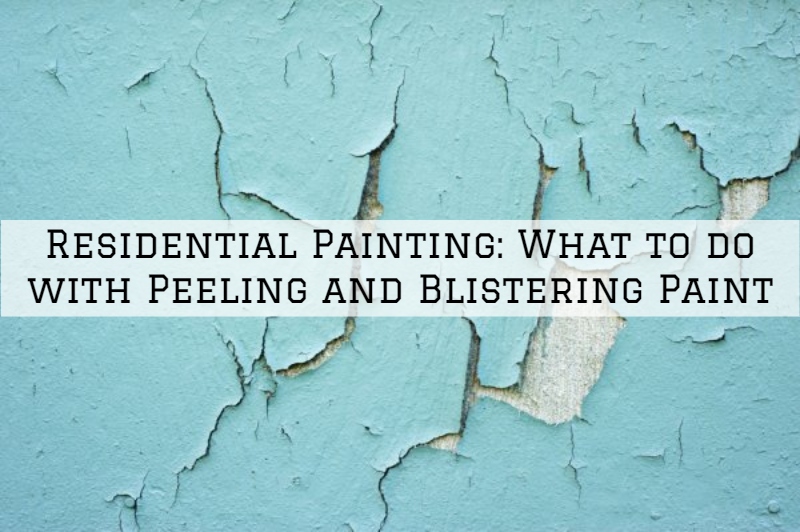Residential Painting: What to do with Peeling and Blistering Paint
Have you tried repainting your ceiling or a wall? But as soon as the paint dries, nasty blisters appear.
Worse still, your paint is peeling and crumbling in places. Don’t panic; it’s just that some painting rules haven’t been followed.
Therefore, it will be necessary to identify the problem that causes this crumbling of your paint to initiate the necessary corrective actions.
The causes are most often linked to poor preparation before painting, the presence of humidity, or even the application of incompatible paint.
Problems with Chipping, Blistering, Or Peeling Paint
Painting a wall or ceiling, and even any interior medium, may seem simple at first. Many believe that all you have to do is clean the substrate, apply a coat of primer, and paint with your chosen paint.
But getting flawless results is not all that easy.
Painting is a fairly complex job, and if you do not know the tricks of the trade, you may have surprises when the paint dries.
A paint of poor quality or inconsistent with the original carrier will cause a lot of damage after drying.
But climatic conditions can also impact the final decorative rendering. If you apply paint during hot weather, i.e., above 25°C to 30°C, depending on the paint, the paint will dry too quickly.
Among the tricks that paint can play on you, here are the most common:
- Blisters appear on the freshly painted wall from the moisture that comes out.
- Cracking: the paint cracks and crumbles in places.
- Detachment: the paint peels off as if it were a loose film.
- Contraction: the paint retracts.
- Foaming: bubbles appear and burst to form a sort of crater on the painted surface.
- Paint bleeding: this is a problem with the pigment in the paint, which will form reddish spots in places. This particularly affects blue or green paints.
These symptoms are indicative of a problem with the paint or application conditions. Therefore, it is important to ensure that you choose a good quality interior paint and apply it in good conditions.
Causes of a substrate that blisters or tears off when applying paint
The substrate is often the cause of painting problems.
Indeed, a poorly prepared surface or a wet wall will cause a lot of damage after the paint has dried.
You should, therefore, pay special attention to the preparatory steps before repainting your walls and ceilings.
And so that you are fully informed, your substrate can be:
- Porous substrate: this means that it absorbs liquids. To find out, just put a drop of water on the surface. If it absorbs it immediately, it is porous.
- Powdery or chalking substrate means that a thin layer of dust settles when you run your hand over your wall. In general, this problem comes from the absence of a protective film on the surface from a dust removal defect after sanding.
- The plaster: the plaster tends to be powdery. It will, therefore, have to be treated before applying the paint.
- Wet wall: the humidity contained in the wall is a barrier to paint. It must be treated before it can be painted.
- Old paint: not all paint mix well. If you have decided to paint a medium that already has traces of an old glycerol paint with water-based paint, you will fail.
- Soft substrate with a crumbly tendency: it must be hardened before painting; otherwise, the substrate will absorb everything and crumble.
If you notice a problem before or during the paint application, you will need to stop working to identify the reasons.
If you need professional help repainting your home, our Eason Painting team would be more than happy to help.
We have years of experience offering residential painting services in Macomb Township, Washington Township, Ray Township, Rochester, Rochester Hills, Romeo, Armada, Troy, Shelby Township, Harrison Township, Chesterfield, and Clinton Township, MI.
Call us today at 586-465-5081 for a FREE painting estimate.

